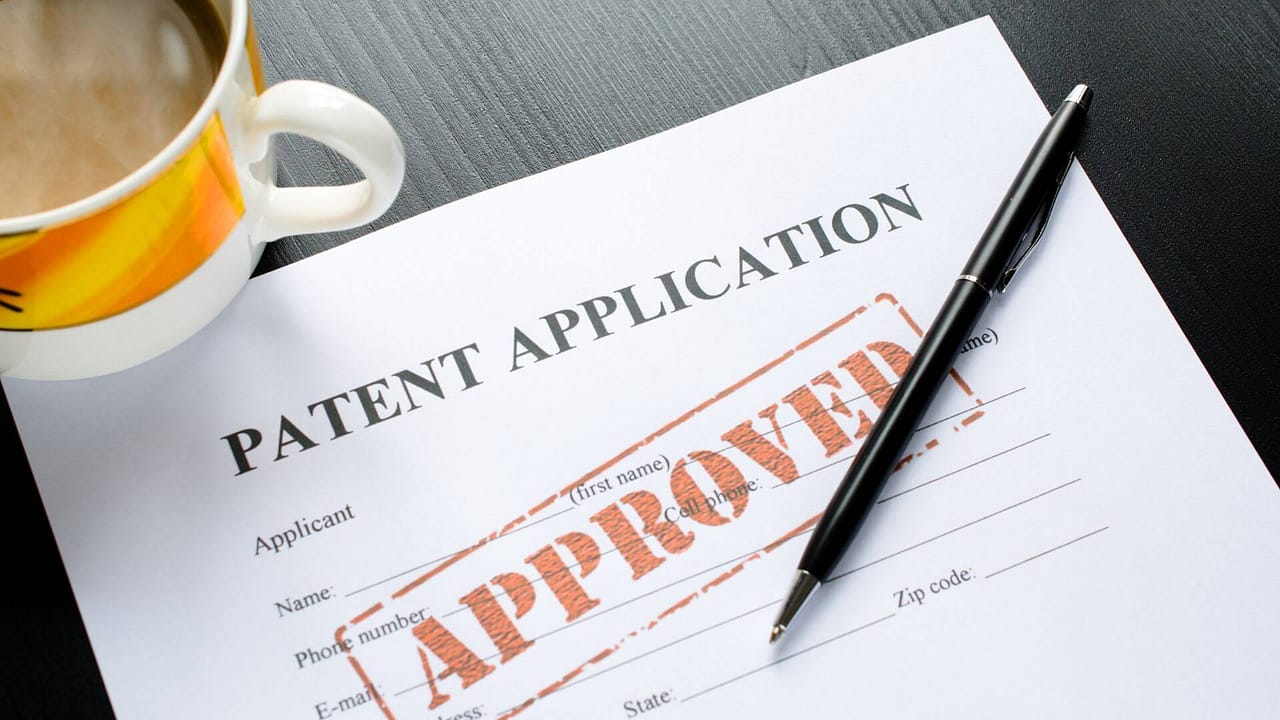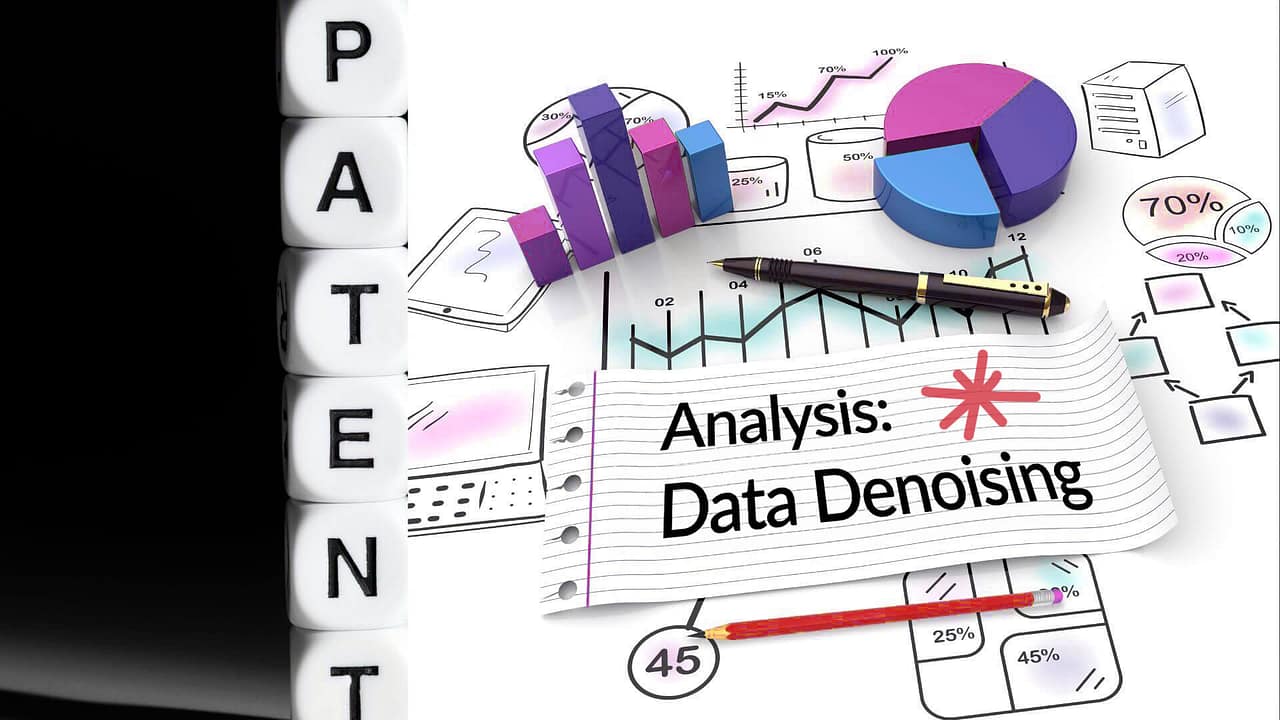Patent Analysis
Navigate the future of innovation with patent analysis, uncovering strategic insights, competitive advantages, and the transformative potential of intellectual property.
Overview
Patent analysis is a comprehensive process of examining and evaluating patents to gain insights into various aspects of innovation, technology trends, competitive landscapes, and intellectual property. It involves a systematic review and interpretation of patent documents, which are legal documents that grant inventors exclusive rights to their inventions. Here's an overview of the critical aspects and purposes of patent analysis:
- Technology Landscape Analysis: Patent analysis helps identify and understand the current state of technology within a specific industry or field. It reveals trends in innovation, emerging technologies, and areas of rapid development.
- Competitive Intelligence: By analyzing patents, businesses can gain insights into the intellectual property strategies of their competitors. It provides information about what technologies and innovations rival companies are investing in and potentially planning to commercialize.
- Innovation Trends: Patent data can be used to identify long-term innovation trends and areas of interest for companies and researchers. This information can inform research and development (R&D) strategies and investment decisions.
- Prior Art Search: Patent analysis is crucial in conducting prior art searches. Prior art refers to existing technologies or innovations that may affect the validity or patentability of a new invention. Patent databases are valuable resources for finding relevant prior art.
- Valuation of Intellectual Property: Companies and inventors often use patent analysis to assess the value of their intellectual property portfolios. This valuation is essential for licensing, mergers and acquisitions, and negotiations with potential investors or partners.
- R&D Strategy: By analyzing patents in a particular field, organizations can refine their R&D strategies. They can identify white spaces or areas with fewer patents, indicating potential opportunities for innovation.
- Legal and Regulatory Compliance: Patent analysis can help companies ensure their innovations do not infringe on existing patents. It aids in understanding the patent landscape to mitigate potential legal risks.
- Market Insights: Patent analysis can provide insights into market dynamics and the potential for new product or technology adoption. It can help identify market leaders and emerging players.
- Geographic Trends: Patent analysis can reveal geographic concentrations of innovation in specific regions or countries. This information can help make decisions related to global expansion or partnerships.
- Technology Transfer and Licensing: Universities and research institutions use patent analysis to identify potential commercialization technologies. It aids in licensing and technology transfer activities.
Methods for patent analysis include keyword searching, classification searching, citation analysis, and more. In recent years, advances in AI and NLP have led to the development of automated tools and software for patent analysis, making it more efficient and scalable.
Overall, patent analysis is a multidisciplinary field that combines elements of technology assessment, business strategy, legal expertise, and data analysis to extract valuable insights from patent documents and shape innovation strategies.
Why Patent Analysis Matters?
- Strategic Insights: Patent analysis provides invaluable insights into a specific technology domain or industry. By examining patent data, businesses can identify emerging trends, potential competitors, and untapped market opportunities.
- Competitive Advantage: Understanding the patent landscape enables companies to assess their competitive position. It helps identify white spaces in the market and areas where they can innovate without infringing on existing patents.
- Risk Mitigation: Businesses can reduce the risk of patent infringement lawsuits by conducting a thorough patent analysis. It ensures they know existing patents and can design around them when developing new products or technologies.
Challenges of Patent Analysis
Patent analysis is a complex process that involves examining and evaluating patents to extract valuable information, assess their potential value, and make informed decisions. While it offers many benefits, patent analysis also comes with several challenges:
|
Challenges
|
Explanation
|
Real-World Example
|
|---|---|---|
|
Vast Amount of Data
|
Analyzing millions of patents is time-consuming and overwhelming, requiring efficient search and retrieval methods.
|
Example: The USPTO database contains over 10 million patents, making it challenging to sift through for relevant information.
|
|
Multilingual Patents
|
Language barriers can impede understanding and hinder comprehensive analysis of patents filed in different languages.
|
Example: A Japanese company wants to analyze Chinese patents related to a specific technology but faces language barriers.
|
|
Incomplete or Inaccurate Data
|
Errors or missing information can lead to incorrect assessments, requiring data validation and cleaning efforts.
|
Example: Incomplete patent records with missing assignee information or incorrect filing dates can hinder accurate analysis.
|
|
Ambiguity in Patent Language
|
Patent language can be complex and open to interpretation, leading to disputes and uncertainty in analysis.
|
Example: A patent's vague terminology may lead to disputes over its scope, as seen in various smartphone patent lawsuits.
|
|
Patent Classification Systems
|
Different classification systems create challenges in categorizing and comparing patents consistently.
|
Example: USPTO and EPO use different classification systems, making it challenging to compare patents filed in both regions.
|
|
Prior Art Search
|
Comprehensive searches are time-intensive, and missing relevant prior art can result in inaccurate assessments.
|
Example: A tech company needs to find prior art to challenge the validity of a competitor's patent, which requires an extensive search.
|
|
Patent Litigation Risks
|
Legal disputes are costly and uncertain, making it challenging to assess potential litigation risks accurately.
|
Example: Companies like Apple and Samsung engage in prolonged patent litigation over smartphone design and features.
|
|
Evolving Patent Laws
|
Changing laws and regulations can affect patent validity and enforceability, necessitating up-to-date legal knowledge.
|
Example: Changes in patent laws, such as the America Invents Act (AIA), impact the validity and enforcement of existing patents.
|
|
Patent Valuation
|
Determining value depends on numerous factors, making it difficult to arrive at precise monetary estimates.
|
Example: Determining the value of a pharmaceutical patent involves assessing market demand, competition, and drug development costs.
|
|
Technological Complexity
|
Cutting-edge technologies may require deep domain expertise, making analysis challenging for non-specialists.
|
Example: Analyzing patents for quantum computing technology requires expertise in a highly specialized field.
|
|
Non-Patent Literature
|
Integrating information from sources outside of patents requires a broader scope and additional research efforts.
|
Example: A pharmaceutical company needs to consider research papers and clinical trial data in addition to patents for drug development.
|
|
Data Privacy and Security
|
Handling sensitive information while ensuring data privacy and security adds complexity to patent analysis.
|
Example: Analyzing patents that contain sensitive information, like chemical formulas, requires strict data security measures.
|
|
Collaboration and Knowledge Sharing
|
Coordinating multidisciplinary teams and sharing domain-specific knowledge can be challenging for effective analysis.
|
Example: A cross-functional team of engineers, lawyers, and market analysts must collaborate to assess the viability of a new patent.
|
Benefits of an effective Patent Analysis
Effective patent analysis provides valuable insights, helps manage risks, supports strategic decision-making, and enhances a company's ability to innovate and compete in today's rapidly evolving technological landscape.
- Innovation Insights: Patent analysis helps identify emerging trends and technological advancements. By studying patent data, businesses can gain insights into the direction of innovation within their industry, enabling them to stay competitive and make informed R&D decisions.
- Competitive Intelligence: Analyzing patents allows companies to monitor their competitors' activities and track their patent portfolios. This information can be used to assess the strength of competitors, identify potential threats, and develop strategies to protect and expand market share.
- Freedom to Operate (FTO): FTO analysis involves assessing whether a product or process may infringe on existing patents. Conducting FTO analysis helps businesses avoid legal disputes and costly patent infringement litigation by ensuring that they have the right to manufacture, use, or sell their products without violating someone else's intellectual property rights.
- Strategic Planning: Patent analysis aids in strategic decision-making. Companies can use this analysis to identify areas where they should invest in new technologies, form partnerships, or license existing patents to achieve their business goals.
- Risk Mitigation: By conducting a thorough patent analysis, businesses can identify potential risks associated with their intellectual property strategy. This includes identifying patents that may be vulnerable to challenges, as well as assessing the validity and enforceability of their patents.
- Valuation: Patents can represent significant assets for a company. Effective patent analysis helps in determining the value of patents, which can be crucial for licensing, mergers and acquisitions, or seeking investment.
- Market Assessment: Patent analysis provides insights into the size and dynamics of a particular market. It helps businesses understand the competitive landscape and the barriers to entry, enabling them to make informed decisions about entering new markets or expanding existing ones.
- Technology Transfer: Universities, research institutions, and companies often engage in technology transfer to commercialize their research. Patent analysis facilitates the identification of technologies with commercial potential, aiding in the transfer of knowledge and technologies from research settings to the marketplace.
- Prior Art Searching: In the patent application process, conducting prior art searches is essential to determine whether an invention is novel and non-obvious. Effective patent analysis can help patent examiners and applicants identify relevant prior art, which is crucial for the success of the patent application.
- Informed Decision-Making: Ultimately, patent analysis supports informed decision-making across various aspects of business and innovation. Whether it's deciding to invest in a new technology, pursue patent protection, or negotiate licensing agreements, having access to comprehensive patent data and analysis is invaluable.
Patent analysis involves examining and assessing patents to gain insights into technology trends, competitive landscapes, innovation strategies, and potential business opportunities. Here's a step-by-step guide on how to conduct patent analysis.
How Do You Do Patent Analysis?
- Define Your Objectives: Clearly define the purpose of your patent analysis. Are you looking for innovation opportunities, assessing competition, evaluating a technology's maturity, or making strategic decisions?
- Data Collection: Identify the relevant patents: Determine the specific technology or field you want to analyze and identify the relevant patents. You can use patent databases such as Google Patents, Espacenet, the United States Patent and Trademark Office (USPTO), or paid services like Thomson Reuters' Derwent Innovation.
- Search Query: Craft a comprehensive search query using keywords, patent classifications, and other relevant filters. Refine your query to obtain the most relevant results.
- Data Extraction: Collect data on relevant patents, including titles, abstracts, inventors, assignees, publication dates, citations, and claims. Some patent databases provide downloadable datasets for analysis.
- Citation Analysis: Examine patent citations to understand how a patent relates to prior and subsequent innovations. This type of analysis can help gauge the importance of a patent within a technological field.
- Prior Art Search: Identify prior art to assess the novelty of a patent. This search type can be crucial in evaluating a patent's strength and potential enforceability.
- Patent Family Analysis: Analyze patent families to determine the geographical coverage of a patent and whether it has been filed in multiple countries.
- Technology Classification: Assign appropriate technology classifications or codes to patents to categorize them by technology area, making it easier to analyze and compare.
- Competitive Landscape: Identify competitors and key players in the technology field. Analyze their patent portfolios to assess their strengths and weaknesses.
- Patent Trends and Time Series Analysis: Plot patent filing trends over time to understand the evolution of technology in the field. Identify peaks and valleys in innovation activity.
- Keyword Analysis: Use natural language processing (NLP) and text mining techniques to analyze patent titles and abstracts for common keywords and trends.
- Visualizations: Create visualizations like heat maps, network graphs, and trend charts to present your findings visually compellingly.
- Patent Valuation: Evaluate the potential economic value of patents, considering factors such as market size, potential licensing opportunities, and litigation risks.
- Strategic Insights: Draw conclusions and insights from your analysis. This process could include identifying white spaces for innovation, assessing the competitive landscape, or making recommendations for R&D or business strategy.
- Reporting: Present your findings in a clear and concise report or presentation, making it accessible to stakeholders for making decisions.
- Ongoing Monitoring: Patent analysis is not a one-time task. Continuously monitor patent activity in your area of interest to stay updated with the latest developments.
Keep in mind that patent analysis can be complex, and you may benefit from using specialized software or working with experts in the field to extract meaningful insights from the patent data. Additionally, the legal and ethical considerations surrounding patent analysis, such as avoiding infringement and respecting intellectual property rights, are essential aspects of the process.
|
Aspect of Patent Analysis
|
What to Check
|
Example
|
|---|---|---|
|
Keyword Search
|
Relevant keywords or phrases for the technology of interest.
|
Searching for "machine learning algorithms" to find patents related to AI technology.
|
|
Classification Search
|
Relevant patent classification codes for targeted technology areas.
|
Using CPC codes to narrow down patents related to renewable energy technologies.
|
|
Citation Analysis
|
Number and relevance of citations in both directions (backwards and forward citations).
|
Identifying patents that are highly cited, indicating their influence in the field.
|
|
Patent Family Analysis
|
The global protection of a patent and related filings in different countries.
|
Investigating the original patent and its international counterparts in key markets.
|
|
Legal Status Analysis
|
The legal status of a patent, including expiry dates and maintenance fees.
|
Ensuring that key patents in a portfolio are still in force and actively maintained.
|
|
Patent Mapping
|
Visual representation of the technological landscape, trends, and gaps.
|
Creating a patent map to identify clusters of innovation in electric vehicle technologies.
|
|
Technology Evolution Analysis
|
How technology has progressed over time within the patent landscape.
|
Tracking the development of 3D printing technologies from early patents to recent innovations.
|
|
Competitor Analysis
|
Identification of competitors based on their patent portfolios.
|
Analyzing patents owned by rival companies in the pharmaceutical industry.
|
|
Freedom-to-Operate (FTO) Analysis
|
Assessing potential patent infringement risks for your products or technologies.
|
Evaluating whether your new medical device design could infringe on existing patents.
|
|
Patent Valuation
|
Determining the value of individual patents or a portfolio.
|
Valuing a portfolio of AI-related patents for potential licensing or sale.
|
|
Patent Text Analysis
|
Extracting key information from patent texts using natural language processing.
|
Using NLP to analyze patent claims and identify technical details in a blockchain patent.
|
|
Patent Landscape Reports
|
Commissioning in-depth reports from patent analysis firms.
|
Hiring a consultancy to provide a comprehensive report on the state of quantum computing patents.
|
|
IP Analytics Tools
|
Utilizing software platforms with advanced analytics features.
|
Using Insightloupe to generate patent landscape visualizations and insights.
|
|
Patent Scoring Models
|
Developing scoring models to rank patents based on specific criteria.
|
Scoring patents on their potential market impact and technical significance.
|
|
Patent Analysis Using Multidatabase Approach
|
Incorporating multiple patent databases for a comprehensive analysis.
|
Combining data from USPTO, EPO, and WIPO databases to ensure global coverage.
|
Tools and Software for Patent Analysis
Several specialized tools and software are available to streamline the patent analysis process. Some popular options include:
- Patent Databases: Online databases like the United States Patent and Trademark Office (USPTO), European Patent Office (EPO), and Google Patents provide access to a vast repository of patent documents.
- Patent Analytics Software: Tools like Searchstream and Insightloupe offer advanced analytics and visualization capabilities to extract meaningful insights from patent data.
- Machine Learning and AI: Artificial intelligence and machine learning algorithms are increasingly used to automate patent analysis, identify trends, and predict future innovations.
Who is Responsible for Patent Analysis?
Within corporations and among legal vendors and service providers, there are various professionals and roles responsible for patent analysis and management. Here are some of the key individuals and teams involved in these domains:
Within Corporations:
- In-House Patent Attorneys and Agents: Many large corporations employ in-house patent attorneys and agents who are responsible for managing the company's patent portfolio. They analyze patent strategies, file patent applications, and ensure that the company's intellectual property is adequately protected.
- R&D and Innovation Teams: Research and development (R&D) teams are often responsible for generating new inventions. They may conduct preliminary patent searches and analysis to assess the patentability of their innovations before seeking legal advice.
- Technology Managers: Technology managers or technology transfer professionals within a corporation may be tasked with evaluating the commercial potential of inventions, conducting market analysis, and making decisions about patent filing, licensing, or selling patents.
- Product Managers: Product managers may work closely with patent professionals to understand the competitive landscape and ensure that product development aligns with the company's patent strategy.
- IP Portfolio Managers: Some companies have IP portfolio managers or intellectual property managers who oversee the entire portfolio of patents, trademarks, and copyrights. They may work with legal teams and outside vendors to analyze and manage patents.
- Competitive Intelligence Teams: Larger corporations often have competitive intelligence teams that monitor the patent activity of their competitors and assess the potential impact on the company's business.
Within Legal Vendors and Service Providers:
- Patent Attorneys and Agents: Legal vendors and law firms specializing in intellectual property law employ patent attorneys and agents who assist clients with patent analysis, prosecution, and enforcement.
- Patent Analysts and Researchers: These professionals specialize in conducting in-depth patent searches and analysis to help clients understand the patent landscape, assess the validity of patents, and identify potential infringement risks.
- Technology and IP Consultants: IP consulting firms provide strategic advice on patent management, portfolio optimization, and IP monetization strategies. They may also offer patent analysis services to assess the value of patents.
- Patent Search Firms: Some firms specialize in patent searching and analysis services, helping clients identify relevant prior art, assess patentability, and conduct freedom-to-operate searches.
- Litigation Support Teams: Legal service providers often have teams dedicated to supporting patent litigation efforts. They assist with patent analysis, expert witness services, and the preparation of legal arguments.
- IP Management Software Providers: Companies that develop IP management software offer tools and platforms to help organizations analyze and manage their patent portfolios effectively.
- IP Analytics Firms: These firms use data analytics and machine learning techniques to provide clients with insights into patent trends, technology landscapes, and competitive intelligence.
- IP Valuation Experts: Valuation experts specialize in assessing the monetary value of patents, which can be crucial for licensing negotiations, mergers and acquisitions, and financial reporting.
In summary, within corporations, various teams and individuals, including in-house patent professionals, R&D teams, and technology managers, are responsible for patent analysis and management. Among legal vendors and service providers, patent attorneys, analysts, consultants, and technology firms offer specialized services to assist clients with their patent-related needs.
Conclusion
Patent analysis is a crucial tool for businesses and innovators looking to navigate the complex landscape of intellectual property and technology trends. By harnessing the power of patent data, organizations can make informed decisions, mitigate risks, and drive innovation with a deeper understanding of their competitive environment. Whether you're a startup looking to carve out a niche or a multinational corporation safeguarding its intellectual property, patent analysis is an indispensable asset on your innovation journey.
Related Resources
Expand Your Understanding.

Milestone Achieved: USPTO issues one millionth Design Patent
USPTO’s historic moment: 1 millionth design patent granted. Explore the impact on innovation, small businesses, and the IP landscape.

10 AI-Driven Solutions for IP Portfolio Management
Explore how AI simplifies IP creation, enhances patent analysis, automates trademark management, and revolutionizes IP strategy. Learn how predictive analytics, contract automation, and ethical considerations shape the future of intellectual property management.

Data Privacy and AI: Securing Intellectual Property in the Modern Digital Landscape
Discover how AI revolutionizes data analysis while posing challenges to data privacy and IP rights. Learn strategies to safeguard intellectual property.

Optimizing Patent Analysis: The Strategic Power of Data Denoising
Discover how innovationcan help your business stay ahead of the competition. Learn about the seven types of innovation intelligence and how market leaders utilize them. Stay on top of the game with insights into the latest industry trends and strategies.
Talk to One of Our Experts
Get in touch today to find out about how Evalueserve can help you improve your processes, making you better, faster and more efficient.